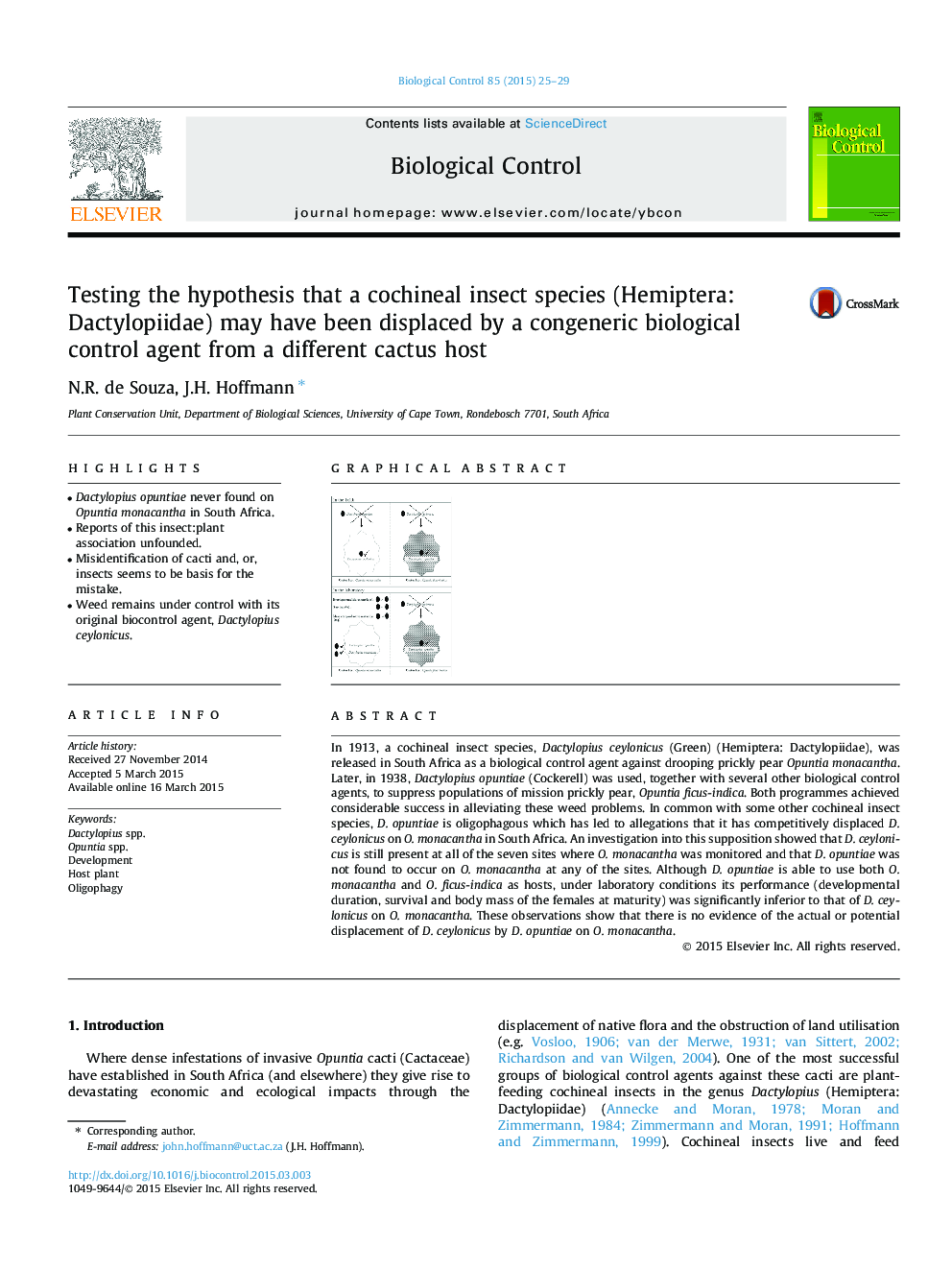| Article ID | Journal | Published Year | Pages | File Type |
|---|---|---|---|---|
| 4503802 | Biological Control | 2015 | 5 Pages |
•Dactylopius opuntiae never found on Opuntia monacantha in South Africa.•Reports of this insect:plant association unfounded.•Misidentification of cacti and, or, insects seems to be basis for the mistake.•Weed remains under control with its original biocontrol agent, Dactylopius ceylonicus.
In 1913, a cochineal insect species, Dactylopius ceylonicus (Green) (Hemiptera: Dactylopiidae), was released in South Africa as a biological control agent against drooping prickly pear Opuntia monacantha. Later, in 1938, Dactylopius opuntiae (Cockerell) was used, together with several other biological control agents, to suppress populations of mission prickly pear, Opuntia ficus-indica. Both programmes achieved considerable success in alleviating these weed problems. In common with some other cochineal insect species, D. opuntiae is oligophagous which has led to allegations that it has competitively displaced D. ceylonicus on O. monacantha in South Africa. An investigation into this supposition showed that D. ceylonicus is still present at all of the seven sites where O. monacantha was monitored and that D. opuntiae was not found to occur on O. monacantha at any of the sites. Although D. opuntiae is able to use both O. monacantha and O. ficus-indica as hosts, under laboratory conditions its performance (developmental duration, survival and body mass of the females at maturity) was significantly inferior to that of D. ceylonicus on O. monacantha. These observations show that there is no evidence of the actual or potential displacement of D. ceylonicus by D. opuntiae on O. monacantha.
Graphical abstractFigure optionsDownload full-size imageDownload as PowerPoint slide
